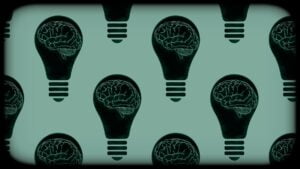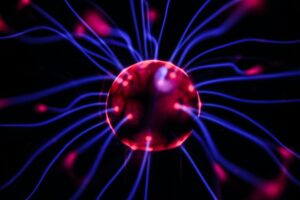“Transcranial magnetic stimulation (TMS) uses a magnetic field to “carry” a short lasting electrical current pulse into the brain where it stimulates neurones, particularly in superficial regions of cerebral cortex. TMS can interfere with cognitive functions in two ways. A high intensity TMS pulse causes a synchronised high frequency burst of discharge in a relatively large population of neurones that is terminated by a long lasting GABAergic inhibition. The combination of artificial synchronisation of activity followed by depression effectively disrupts perceptual, motor and cognitive processes in the human brain.
This transient neurodisruption has been termed a “virtual lesion”. Smaller intensities of stimulation produce less activity; in such cases, cognitive operations can probably continue but are disrupted because of the added noisy input from the TMS pulse. It is usually argued that if a TMS pulse affects performance, then the area stimulated must provide an essential contribution to behaviour being studied. However, there is one exception to this: the pulse could be applied to an area that is not involved in the task but which has projections to the critical site. Activation of outputs from the site of stimulation could potentially disrupt processing at the distant site, interfering with behaviour without having any involvement in the task.
A final important feature of the response to TMS is “context dependency”, which indicates that the response depends on how excitable the cortex is at the time the stimulus is applied: if many neurones are close to firing threshold then the more of them are recruited by the pulse than at rest. Many studies have noted this context-dependent modulation. However, it is often assumed that the excitability of an area has a simple relationship to activity in that area. We argue that this is not necessarily the case. Awareness of the problem may help resolve some apparent anomalies in the literature.”
Read the full article: https://bit.ly/3wJtre8




